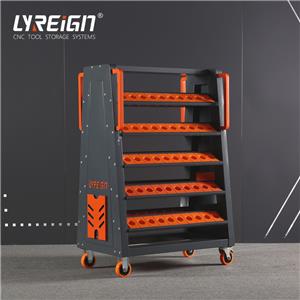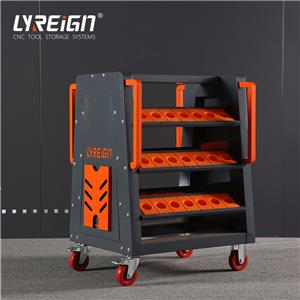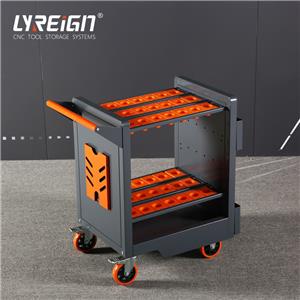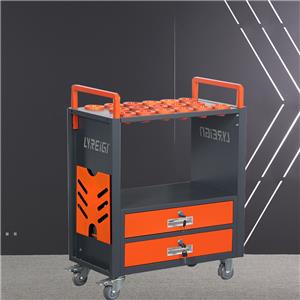- Home
- >
- News
- >
- Industry Knowledge
- >
- Performance characteristics of diamond cutting tools
Performance characteristics of diamond cutting tools
⑵ Performance characteristics of diamond cutting tools
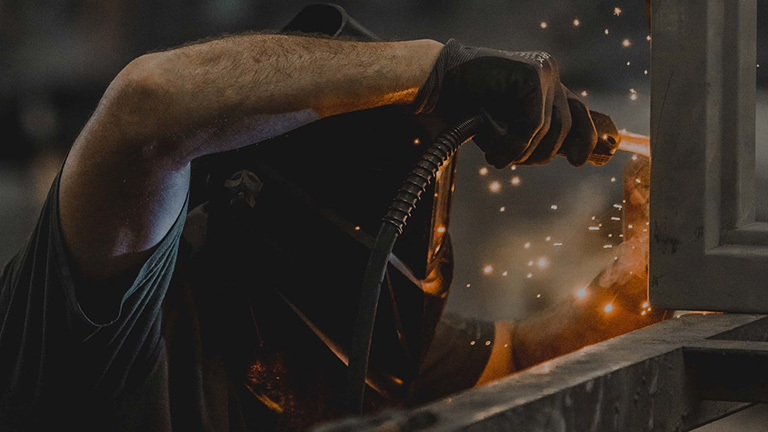
① High hardness and wear resistance: natural diamond is a hard substance that has been found in nature. Diamond has very high wear resistance. When processing high hardness materials, the life of diamond tool is lO ~ 100 times, or even up to hundreds of times.
② Has a very low friction coefficient: the friction coefficient between diamond and some non-ferrous metals is lower than other tools, low friction coefficient, processing deformation is small, can reduce the cutting force.
③ Very sharp cutting edge: the cutting edge of diamond tool can be ground very sharp, natural single crystal diamond tool can be up to 0.002 ~ 0.008μm, can carry out ultra-thin cutting and ultra-precision machining.
④ It has high thermal conductivity: diamond has high thermal conductivity and thermal diffusivity, cutting heat is easy to disperse, and the cutting temperature is low.
⑤ It has a low coefficient of thermal expansion: the coefficient of thermal expansion of diamond is several times smaller than that of hard alloy, and the change of tool size caused by cutting heat is very small, which is particularly important for precision and ultra-precision machining with high dimensional accuracy requirements.
(3) The application of diamond tools
Diamond tools are often used for fine cutting and boring of non-ferrous and non-metallic materials at high speed. Suitable for processing a variety of wear-resistant non-metallic, such as glass steel powder metallurgy blank, ceramic materials; All kinds of wear-resistant non-ferrous metals, such as all kinds of silicon aluminum alloy; All kinds of non-ferrous metal finishing processing.
The disadvantage of diamond tool is poor thermal stability. When the cutting temperature exceeds 700℃ ~ 800℃, it will completely lose its hardness. In addition, it is not suitable for cutting ferrous metals, because diamond (carbon) at high temperatures tend to interact with iron atoms, causing carbon atoms to change into graphite structure, and the tool is easily damaged.
2. Cubic boron nitride tool material
The second superhard material, cubic boron nitride (CBN), synthesized by a method similar to that used in the manufacture of diamond, is second only to diamond in terms of hardness and thermal conductivity, and has excellent thermal stability. No oxidation occurs even when heated to 10000C in the atmosphere. CBN has very stable chemical properties for ferrous metals and can be widely used in the processing of iron and steel products.
⑴ Types of cubic boron nitride cutting tools
cubic boron nitride (CBN) is a material that does not exist in nature and can be divided into single crystal and Polycrystalline, namely, CBN single crystal and polycrystalline cubic boron nitride (PCBN). CBN is one of the isomers of boron nitride (BN), which is similar in structure to diamond.
PCBN(polycrystalline cubic boron nitride) is a polycrystalline material sintered together by combining the fine CBN material (TiC, TiN, Al, Ti, etc.) under high temperature and high pressure. It is a tool material with a hardness second only to diamond that is synthesized by artificial means. PCBNS are mainly used to make knives or other tools.
PCBN cutting tool can be divided into integral PCBN blade and sintered with carbide composite PCBN composite blade.
PCBN composite blade is in the strength and toughness of good carbide sintered a layer of O.5 ~ 1.0mm thick PCBN, its performance both good toughness and high hardness and wear resistance, it solves the CBN blade bending strength low and welding difficulties and other problems.
The main properties and characteristics of cubic boron nitride
Although the hardness of cubic boron nitride is slightly lower than diamond, but it is much higher than other high hardness materials. The outstanding advantage of CBN is that its thermal stability is much higher than that of diamond, which can reach more than 1200℃ (diamond is 700 ~ 800℃). Another outstanding advantage is that it has great chemical inertness, and does not react with iron at 1200 ~ 1300℃. The main properties of cubic boron nitride are as follows.
① High hardness and wear resistance: CBN crystal structure is similar to diamond, with similar hardness and strength to diamond. PCBN is especially suitable for machining previously only grinding high hardness materials, can obtain better workpiece surface quality.
② It has high thermal stability: the heat resistance of CBN can reach 1400 ~ 1500℃, which is almost l times higher than that of diamond (700 ~ 800℃). PCBN tools can be used for high speed cutting of superalloy and hardened steel at 3 to 5 times higher speeds than carbide tools.
③ Excellent chemical stability: and iron material to 1200-1300 ℃ does not have chemical effects, not like diamond as sharp wear, then it can still maintain the hardness of hard alloy; PCBN tool is suitable for cutting hardened steel parts and cold cast iron, and can be widely used in high speed cutting of cast iron.
④ Good thermal conductivity: Although the thermal conductivity of CBN can not catch up with diamond, but in all kinds of tool materials, the thermal conductivity of PCBN is second only to diamond, much higher than high speed steel and hard alloy.
⑤ with low friction coefficient: low friction coefficient can lead to cutting force reduction, cutting temperature reduction, machining surface quality improvement.
⑶ Cubic boron nitride tool application
Cubic boron nitride is suitable for finishing all kinds of hardened steel, hard cast iron, high temperature alloy, hard alloy, surface spraying materials and other difficult cutting materials. The machining accuracy can reach IT5(hole is IT6), and the surface roughness can be as small as Ra1.25 ~ 0.20μm.
Cubic boron nitride tool material toughness and bending strength is poor. Therefore, cubic boron nitride turning tool should not be used for rough machining with low speed and large impact load; At the same time, it is not suitable for cutting large plastic materials (such as aluminum alloy, copper alloy, nickel-based alloy, plastic large steel, etc.), because the cutting of these metals will produce serious chip nodules, and the processing surface deterioration.
3. Ceramic tool material
Ceramic tool has the characteristics of high hardness, good wear resistance, good heat resistance and chemical stability, and is not easy to bond with metal. Ceramic cutting tools play a very important role in NC machining. Ceramic cutting tools have become one of the main tools for high speed cutting and difficult material processing. Ceramic tool is widely used in high speed cutting, dry cutting, hard cutting and hard machining materials. Ceramic cutting tool can efficiently process the high hard materials that traditional cutting tools can't process at all, so as to realize "grinding by turning"; The better cutting speed of ceramic cutting tool can be 2 ~ lO times higher than that of carbide cutting tool, thus greatly improving the cutting efficiency; The main raw materials used for ceramic cutting tools are abundant elements in the earth's crust. Therefore, the popularization and application of ceramic cutting tools are of great significance to improve productivity, reduce processing costs and save strategic precious metals. It will also greatly promote the progress of cutting technology.
⑴ Types of ceramic tool materials
Ceramic tool materials generally can be divided into alumina based ceramics, silicon nitride based ceramics, composite silicon nitride alumina based ceramics three categories. Alumina - based and silicon nitride - based ceramic tool materials are widely used. The performance of silicon nitride based ceramics is better than that of alumina based ceramics.
⑵ The performance and characteristics of ceramic cutting tools
① High hardness, good wear resistance: although the hardness of ceramic cutting tools is not as high as PCD and PCBN, but much higher than carbide and high speed steel tools, up to 93-95HRA. Ceramic cutting tools can process high hard materials which are difficult to process with traditional cutting tools. They are suitable for high speed cutting and hard cutting.
② High temperature resistance and good heat resistance: ceramic cutting tools can still be cut at high temperature above 1200℃. Ceramic tool has good mechanical properties at high temperature. The oxidation resistance of A12O3 ceramic tool is particularly good. The cutting edge can be used continuously even if it is in red heat. Therefore, the ceramic tool can realize dry cutting, thus saving the cutting fluid.
③ Good chemical stability: ceramic tool is not easy to bond with metal, and corrosion resistance, good chemical stability, can reduce the adhesive wear of the tool.
(4) Low friction coefficient: ceramic tool and metal affinity is small, low friction coefficient, can reduce the cutting force and cutting temperature.
⑶ Ceramic knife has application
Ceramic is one of the tool materials mainly used in high - speed finishing and semi - finishing. Ceramic tool is suitable for machining all kinds of cast iron (gray cast iron, ductile cast iron, malleable cast iron, cold cast iron, high alloy wear-resistant cast iron) and steel (carbon structural steel, alloy structural steel, high strength steel, high manganese steel, hardened steel, etc.), can also be used to cut copper alloy, graphite, engineering plastics and composite materials.
Ceramic tool material properties have low bending strength, poor impact toughness, not suitable for cutting at low speed, impact load.
4. Coating tool material
Coating the tool is one of the important ways to improve the tool performance. The appearance of coating tool makes a great breakthrough in cutting performance. Coating tool is on the tool body with good toughness, coated with one layer or multiple layers of refractory compounds with good wear resistance, it combines the tool matrix with hard coating, so as to greatly improve the performance of the tool. The coating tool can improve the machining efficiency, improve the machining accuracy, prolong the service life of the tool and reduce the machining cost.

